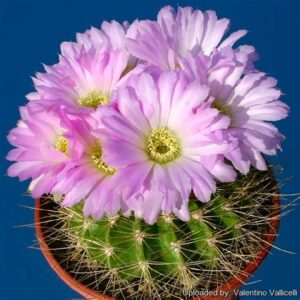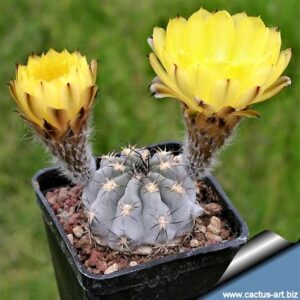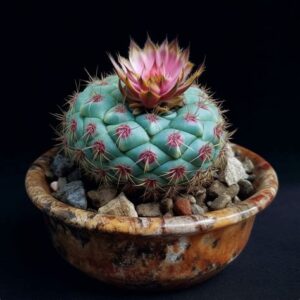Acanthocalycium cacti, known for their striking appearance and delightful blooms, are a perennial subject of fascination among gardening enthusiasts and botanists alike. They belong to the diverse family of cacti, which are characterized by their succulent tissues and unique adaptations to arid environments. One intriguing aspect of these fascinating plants is their root systems. This article delves into the complexities surrounding the roots of Acanthocalycium cacti, offering insights that may redefine your understanding of these remarkable succulents.
The Fascinating Roots of Cacti
Before exploring whether Acanthocalycium cacti possess roots, it is essential to understand the general characteristics of cacti root systems. Cacti roots are notably different from those of many other plants due to their environment and survival strategies. Typically, cacti develop shallow but extensive root systems that enable them to efficiently absorb water from minimal rainfall. These roots often spread outward rather than delving deeply into the soil, allowing them to capture surface moisture before it evaporates.
In addition to their morphology, cacti roots also harbor a specialization that aids in nutrient absorption. Many cacti are mycorrhizal, meaning they form symbiotic relationships with fungi that enhance their ability to extract essential nutrients from the soil. This cooperative arrangement is especially crucial in nutrient-poor desert environments, where the competition for resources is fierce.
Exploring Acanthocalycium’s Root Structure
Acanthocalycium cacti exhibit characteristics that make them well-adapted to their natural habitats, primarily in the semi-arid environments of South America. These adaptations extend to their roots. Despite being categorized alongside other cacti, Acanthocalycium manifests a distinctive root structure that plays a crucial role in its survival.
The roots of Acanthocalycium are often fibrous and shallow. They tend to spread horizontally to maximize water absorption during sporadic rainfalls. This adaptation allows Acanthocalycium cacti to thrive in conditions where other plants might struggle. Their roots are generally robust enough to anchor the plant in place, but they do not delve deeply into the ground, again underscoring a preference for efficiency in resource acquisition.
Once established, these roots can store water, enabling the plant to endure prolonged periods of drought. Understanding this aspect of their biology highlights the ingenious survival tactics employed by Acanthocalycium cacti, shedding light on an often-overlooked facet of their existence.
Root System Diversity and Its Implications
The diversity among root systems in the cactus family engenders a variety of survival strategies. Acanthocalycium, while possessing fibrous roots, may exhibit subtle variations in root structure depending on environmental conditions and specific species. For instance, some species may develop more extensive root networks in response to nutrient availability, while others may retain a more confined root system as a survival tactic in more barren landscapes.
This variation can have far-reaching implications for cultivation and care. Gardeners looking to nurture Acanthocalycium cacti should consider these dynamics when selecting soil types and determining watering schedules. An understanding of their root behavior can enhance success rates in both native and garden settings.
The Effect of Soil Composition
The substrate in which Acanthocalycium cacti are cultivated can significantly affect their root development. Well-draining soil is paramount to their health, as excessive moisture can lead to root rot—a common malady among cacti. A combination of sandy or gritty soil is generally preferable, as it mimics the natural habitat of these cacti and promotes healthy root growth.
Furthermore, incorporating organic materials can provide essential nutrients while maintaining soil aeration. This careful balance is indispensable for creating an environment conducive to robust root systems. An intricate understanding of soil composition, coupled with a thorough knowledge of Acanthocalycium’s rooting habits, can yield a flourishing cactus garden that reflects the resilience of its native ecosystem.
Watering Practices for Optimal Root Health
Watering techniques can significantly influence the health of Acanthocalycium roots. While their fibrous roots are adept at capturing moisture, they are not designed for waterlogged conditions. Therefore, a careful and measured approach to watering is critical.
During the growing season—typically spring and summer—Acanthocalycium cacti benefit from regular watering, but it should always be followed by a drying period. This practice allows the roots to absorb water without becoming oversaturated. In the fall and winter, watering should be curtailed to mimic the natural dormant phase experienced by these cacti in the wild.
Understanding the nuances of these watering practices reveals a sophisticated interplay between the root system and environmental factors, providing an opportunity for cacti enthusiasts to cultivate healthier plants.
Challenges and Adaptations in Extreme Conditions
The adaptability of Acanthocalycium cacti to extreme weather conditions speaks volumes about their evolutionary success. In habitats that witness erratic rainfall patterns or prolonged dry spells, these cacti have developed resilience through their roots. The fibrous nature of their root systems allows them to remain grounded and anchored even in the harshest conditions.
Moreover, the roots serve as a crucial storage organ, accumulating water and nutrients during favorable conditions and releasing them as needed. This survival strategy allows Acanthocalycium to persist through adversity, offering an extraordinary lesson in resilience and adaptability observed in nature.
Conclusion: A Shift in the Understanding of Cactus Roots
The exploration of Acanthocalycium cacti offers profound insights into the complexities of their root systems. Contrary to common assumptions, these remarkable succulents do possess roots—though they are characteristically different from those of many other plant species. Their fibrous, shallow roots allow for efficient water absorption, maximizing survival in often arid conditions.
Understanding the biology of Acanthocalycium roots and their relationship with soil composition, watering practices, and environmental challenges compels a reevaluation of cultivation practices and care strategies. This knowledge can not only enhance the experience for cacti enthusiasts but also contribute to a greater appreciation for the remarkable adaptations these plants exhibit in their natural environments.





Leave a Comment